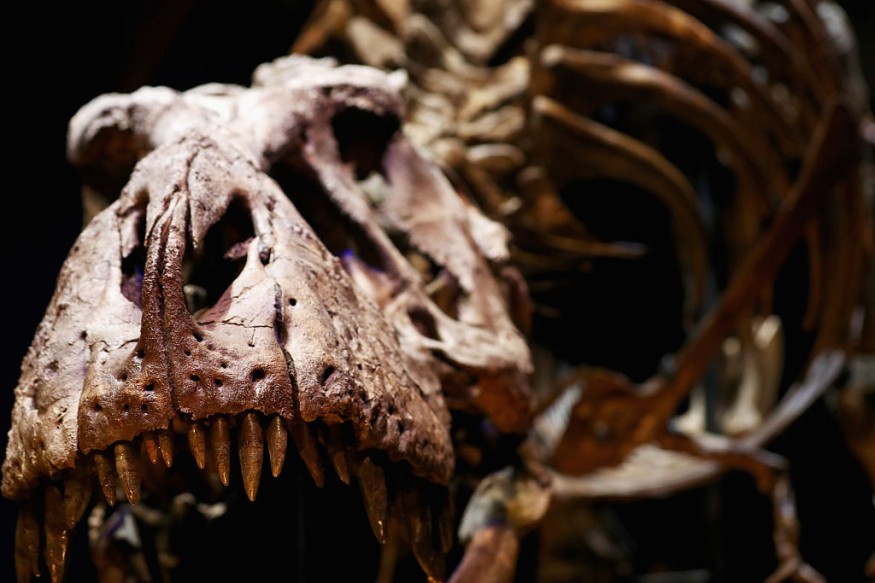The eternal debate of a T-Rex versus a Brontosaurus captivates with the clash of colossal prehistoric titans. While the mighty T-Rex boasts fearsome agility and powerful jaws, the towering Brontosaurus commands sheer size and defensive advantages.
Envisioning this epic battle sparks fascination about the dynamics between predators and herbivores in the ancient world. But which of them will win the fight?

Tyrannosaurus Rex's Iconic Predator's Formidable Size, Bite, and Hunting Strategies
The Tyrannosaurus rex was first discovered in 1905 by Barnum Brown and Henry Osborn. T-rex is by far the most well-known of the dinosaurs and one of the largest predators to ever exist.
Reaching a towering height of 12 feet at the hip and boasting a length akin to a school bus, T. rex holds a commanding position among terrestrial predators, wielding a formidable bite force of 12,800 lbs., matching its weight.
Despite its potent jaws capable of crushing a car, the challenge of bringing down a massive Brontosaurus poses uncertainties, prompting exploration into how T-Rex and similar predators might have approached hunting larger prey, potentially in coordinated packs.
Brontosaurs: Giants, Deterrents, and Adaptive Necks
Brontosauruses possessed a significant advantage over potential predators, primarily due to their immense size. Weighing up to 38,000 pounds, they surpassed the T-Rex by over three times in weight, akin to a lion confronting an elephant. The colossal size of Brontosauruses often deterred predators, making them seek easier, smaller prey.
Brontosaurus belonged to the sauropod group characterized by long necks and tails, thriving during the Late Jurassic Period, approximately 156 to 145 million years ago. Despite the uncertainty about the purpose of their large claws, scientists speculate that these features aided in reaching high foliage, digging nests, and searching for water.
The exceptionally long necks of sauropods like Brontosaurus are theorized to have served multiple functions, including efficient foraging, combat, and attracting mates, resembling behaviors seen in modern animals like giraffes and male elephant seals.
The neck's unique structure, with a triangular cross-section, suggests adaptation for potential combat, protecting vital soft tissues such as the trachea and major blood vessels.
T-Rex Vs. Brontosaurus: Who Will Win?
Existing around 80 million years into the future compared to Brontosaurus, the Tyrannosaurus rex is a late Cretaceous Ceoleurosaur that possesses certain advancements over its late Jurassic period counterparts, such as Carnosaurs or Megalosaurs.
With a larger brain and keener senses, the T-Rex could potentially outsmart contemporary predators like Torvosaurus and surpass Jurassic superpredators from 80 million years earlier, weighing almost twice as much as Saurophaganax maximus, despite comparable length and height.
However, determining a victor in a hypothetical battle between these dinosaur giants proves challenging. They never coexisted, as Brontosaurus went extinct around 145 million years ago, predating the emergence of the Tyrannosaurus Rex by 50 million years.
With no archaeological records documenting a clash between T-Rex-like theropods and Brontosaurus-like sauropods, the outcome remains speculative. Unless unearthed evidence emerges, this battle may simply remain a hypothetical scenario, fit for the realms of the action figure colosseum.
RELATED ARTICLE: Meg Vs. T. Rex: Megalodon Shark Eats Tyrannosaurus Rex in New Movie; Is This Possible?
Check out more news and information on Paleontology in Science Times.












